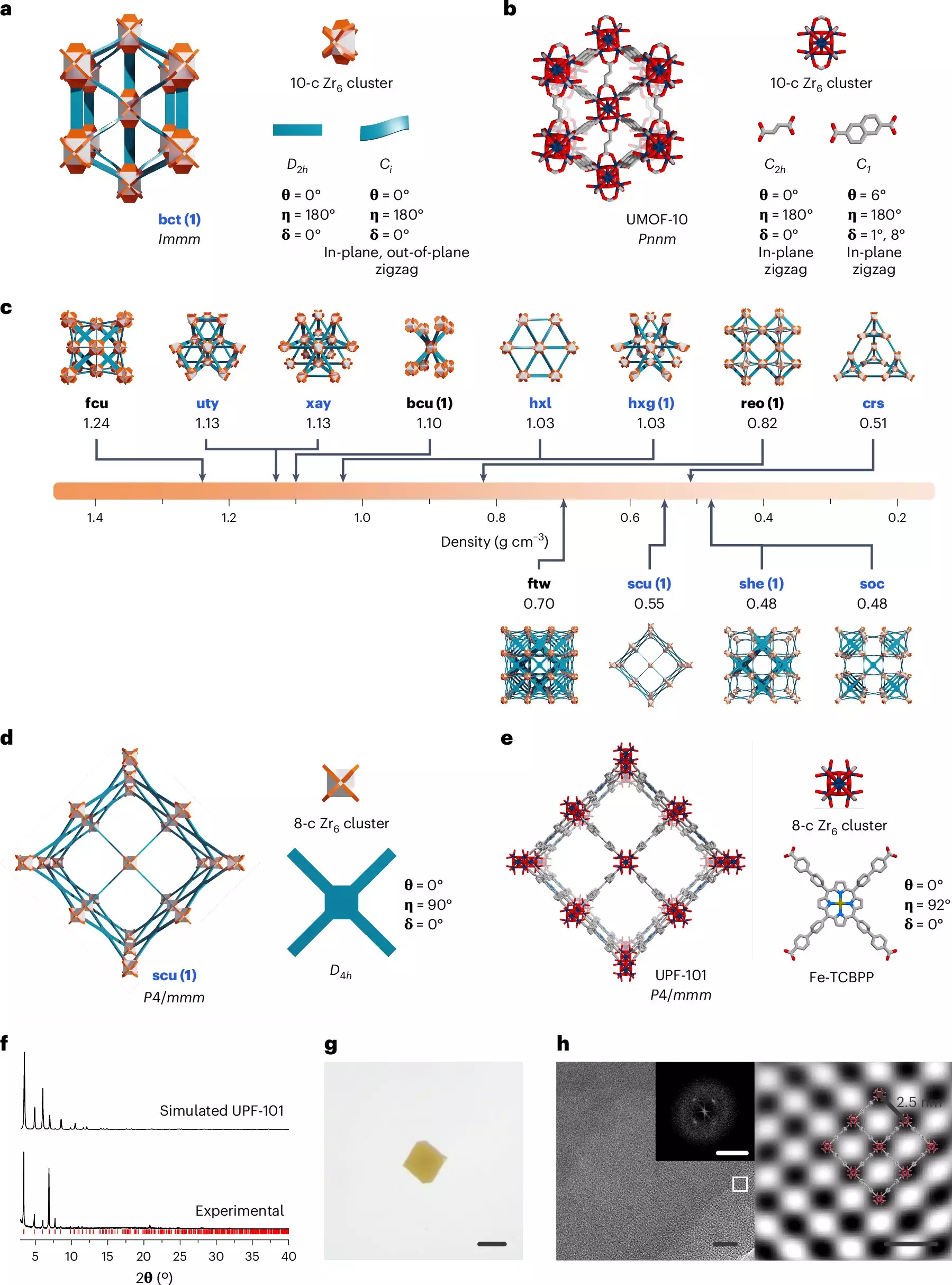Metal-organic frameworks (MOFs) have long been a promising area of research due to their versatile properties and potential applications. Traditionally, MOFs have been designed using either a bottom-up or top-down approach. The bottom-up approach involves selecting metal clusters and organic ligands to explore potential structures. On the other hand, the top-down approach begins with a desired structure and then identifies the components needed to achieve that structure.
The Up-Down Approach, however, offers a new perspective in MOF design. Developed by Professor Wonyoung Choe and his team at Ulsan National Institute of Science and Technology (UNIST) in South Korea, this innovative strategy merges the bottom-up and top-down methodologies. By starting with exploring various structures based on metal clusters before selecting suitable organic ligands, the Up-Down Approach allows for a broader and more flexible exploration of MOF possibilities.
One of the key advantages of the Up-Down Approach is its ability to overcome the limitations of traditional design methods. Instead of being constrained by predefined components and structural restrictions, this approach enables researchers to discover new combinations of diverse elements. This, in turn, opens up new avenues for the creation of novel MOF structures that were previously inaccessible.
By applying the Up-Down Approach, Professor Choe’s team was able to identify 26 new zirconium-based MOFs, known for their high chemical stability. Out of these new structures, they successfully synthesized two, showcasing the effectiveness of this innovative strategy. Additionally, the team utilized a “Ribbon Representation” to visualize the geometric features of organic ligands, further enhancing the precision and efficiency of the design process.
Jiyeon Kim, the first author of the study, emphasized the significant impact of the Up-Down Approach in rapidly exploring and developing new materials with tailored chemical properties. Co-first author Dongsik Nam highlighted the potential of this research in various fields such as catalysis, gas storage, and environmental remediation. Professor Choe concluded by noting that this study represents a major advancement in expanding the chemical space of MOFs, broadening their potential applications significantly.
The Up-Down Approach stands out as a game-changer in accelerating the discovery and development of MOFs. By breaking through traditional limitations and enabling a more flexible exploration of structures, this innovative strategy has the potential to revolutionize the field of MOF research and lead to the creation of novel materials with diverse applications.



Leave a Reply